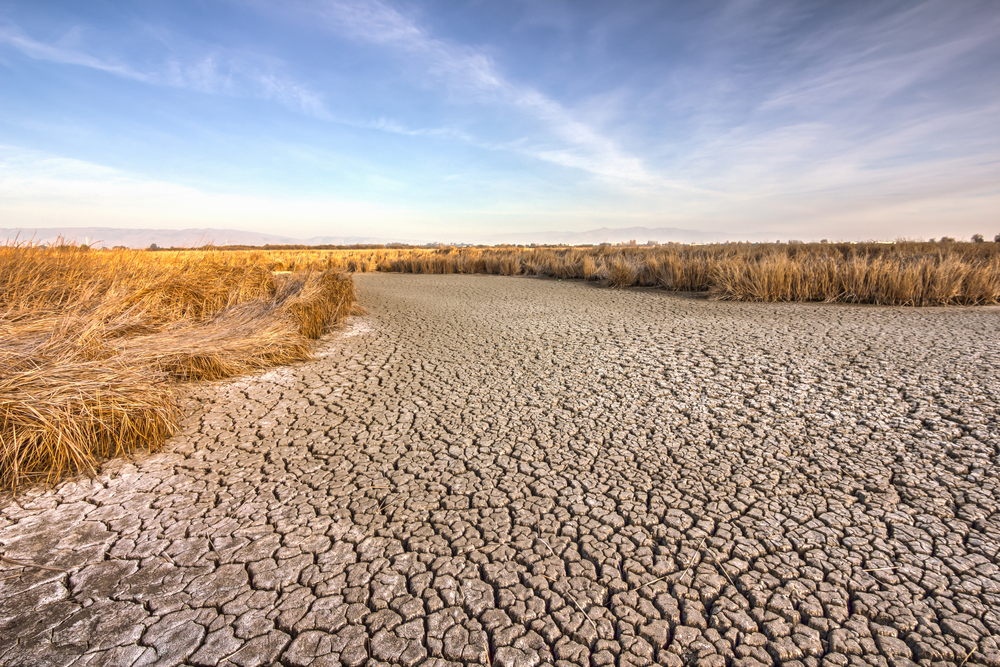
Source: Kate Campbell; Ag Alert
Facing severe drought, California farmers and ranchers are bracing for an increasing flow of bad news about water supplies.
State officials said last week they’re preparing to curtail diversions to holders of certain water rights; federal authorities said they have no immediate plans to increase the “zero” allocation for most of their farm water customers; and a new report detailed the pressure surface-water shortages have placed on California groundwater basins.
The State Water Resources Control Board said it is preparing to curtail water diversions from watersheds that drain into the Sacramento and San Joaquin rivers, the Tulare Lake Basin, and the Russian and Eel rivers.
In times of shortage, state water law says if there’s not enough water for all water right holders, the most junior will be curtailed before restrictions are imposed on more senior water right holders. Seniority is determined by the type and age of the water right.
Riparian water rights are generally the most senior rights, followed by older appropriative rights and then newer rights. Any water supply remaining in the watershed after appropriative water rights are shut off must be shared on a “correlative basis among riparian users.”
In most watersheds where curtailment is likely, the water board said notices will go to post-1914 water rights holders beginning in May; thousands of individuals and water agencies hold such rights, although it is not clear how many will receive the curtailment notices.
Holders of pre-1914 rights are also expected to receive curtailment notices, later this year, and it’s anticipated that supply this summer and fall won’t meet all riparian demands, requiring riparian users also to reduce or stop using water.
Given the dire shortages expected in coming months, the water board said after curtailment, it expects to allow limited diversions for public health and safety needs where no other water supply is available.
“We encourage management of water supplies to protect public health and safety, but we also must emphasize the need for adequate food production,” said Danny Merkley, water resources director for the California Farm Bureau Federation. “Having healthful, local food available is a big part of ensuring human health and safety.”
Also last week, the state Department of Water Resources’ final snow survey of the year found more bare ground than snow, with snow water content at only 18 percent of average for the date.
Officials at the U.S. Bureau of Reclamation, which operates the Central Valley Project, said last week they don’t know “when or if we’ll be doing another (water) allocation announcement.”
Economic losses in the billions of dollars are anticipated due to the zero water allocation for CVP agricultural contractors. The Friant Water Authority said its contractors are preparing for a “financial and social calamity,” as they prepare for the first-ever call on Friant water to supply San Joaquin River exchange contractors and honor their historic river water rights. The agency said all-out efforts continue to seek an emergency solution to the water cutoff.
The state’s citrus belt—Fresno, Tulare and Kings counties, where the bulk of fresh-market citrus is grown on about 50,000 acres—faces estimated losses of $3 billion. Many farms do not have access to groundwater or other alternative water sources, and some orchards are being pushed out.
“It is incredible that a system created to preserve agricultural production in this state is being leveraged to service environmental needs at greater levels than are necessary, while agriculture is left to go dry,” said Joel Nelsen, president of Exeter-based California Citrus Mutual.
The groundwater report is available at www.water.ca.gov/waterconditions.
Curtailment information by watershed is available at www.swrcb.ca.gov/waterrights/water_issues/programs/drought/analysis/.








